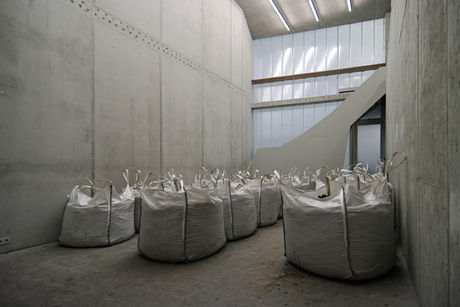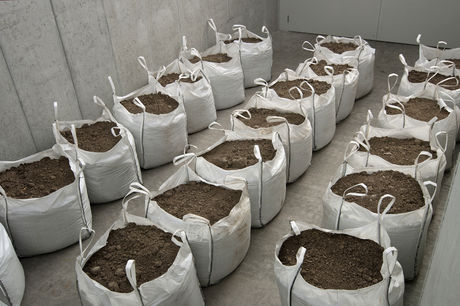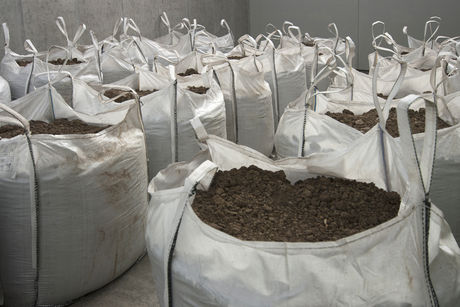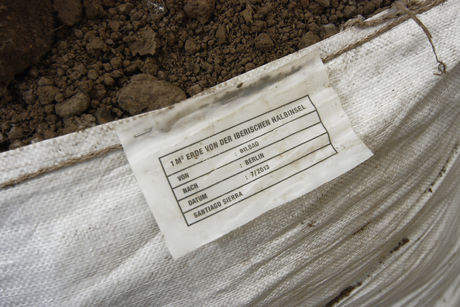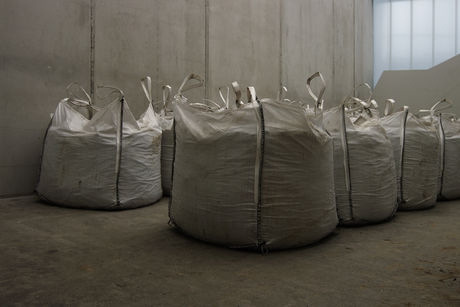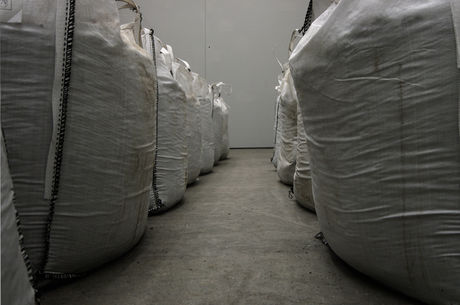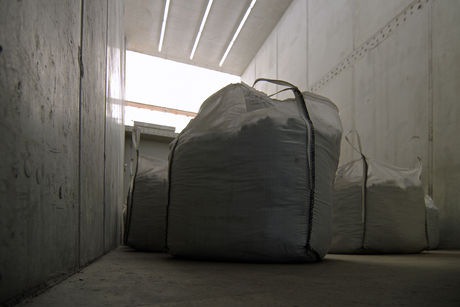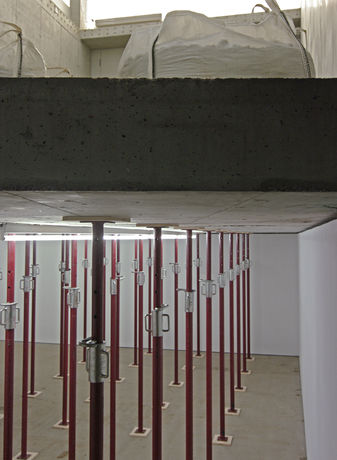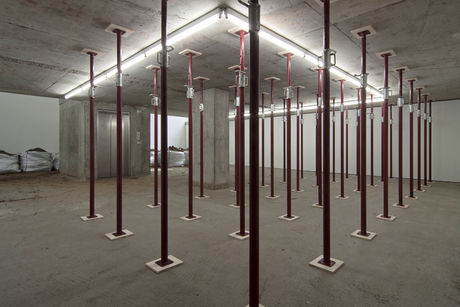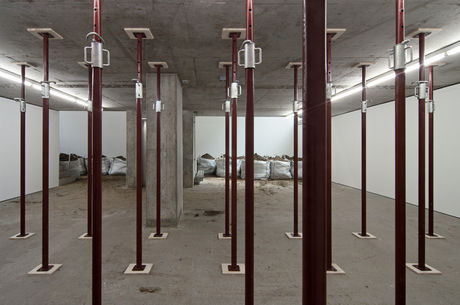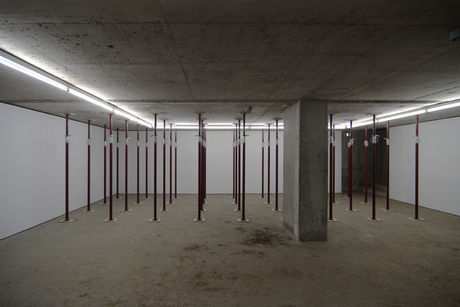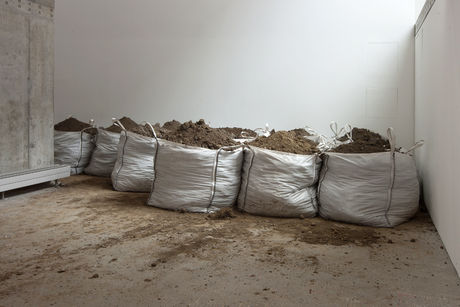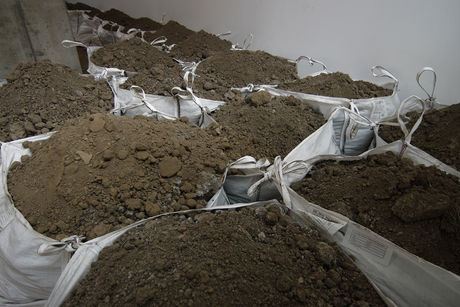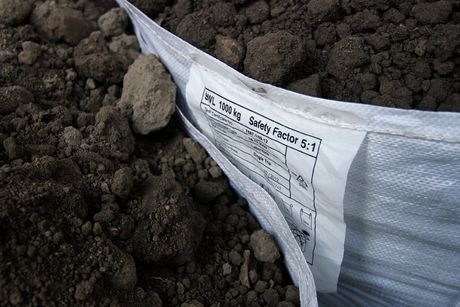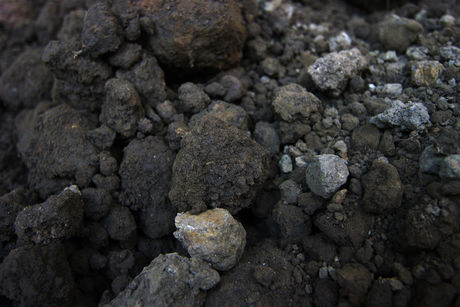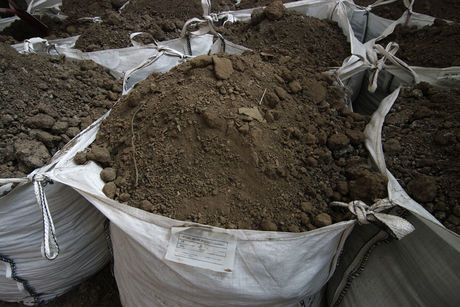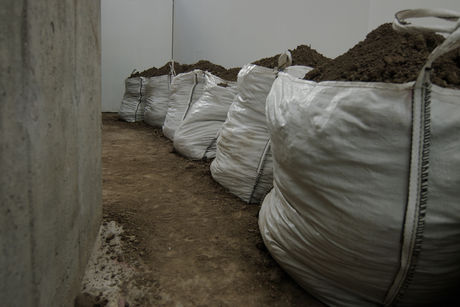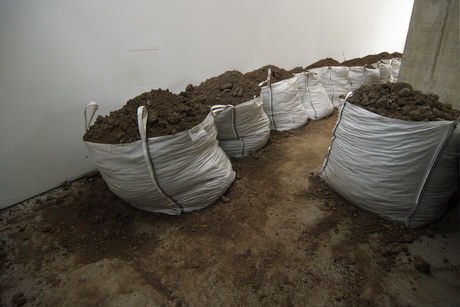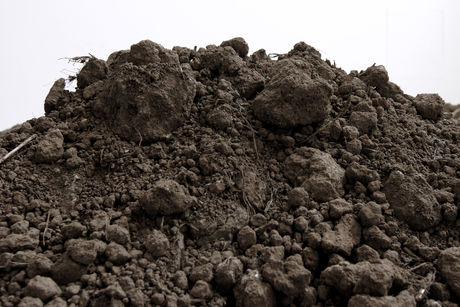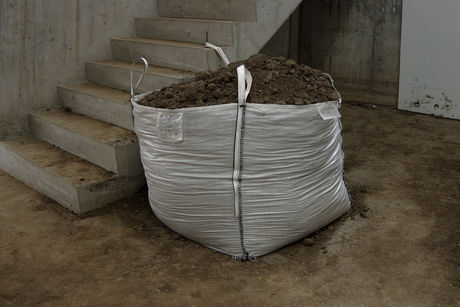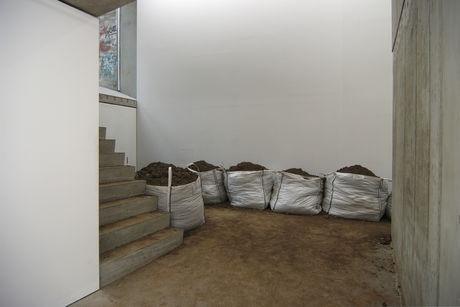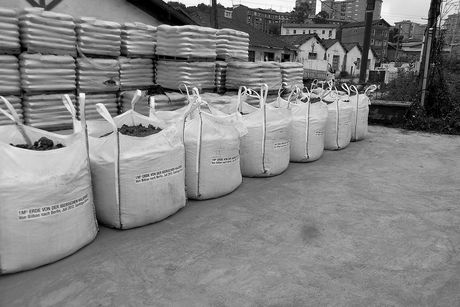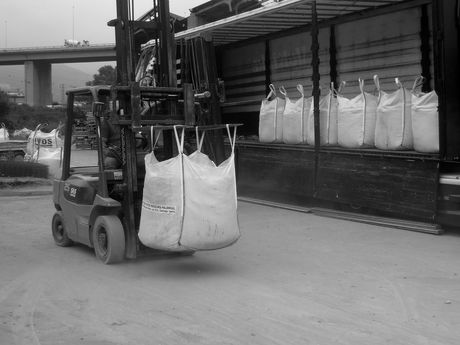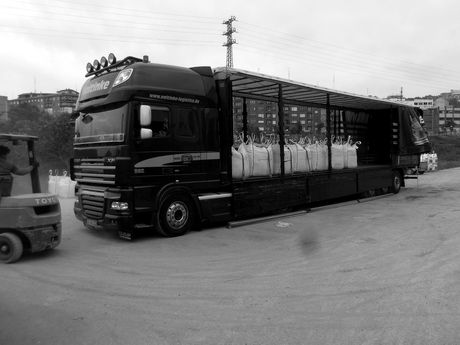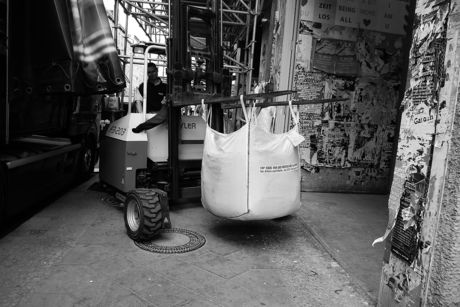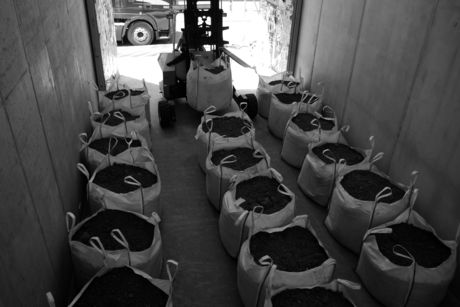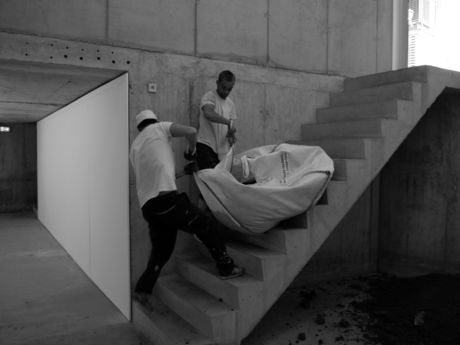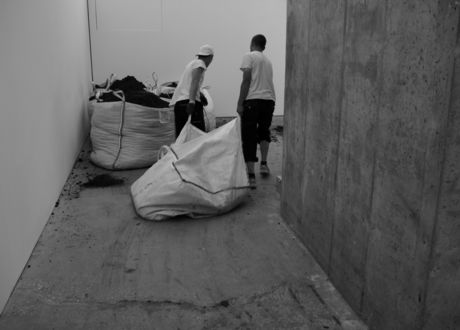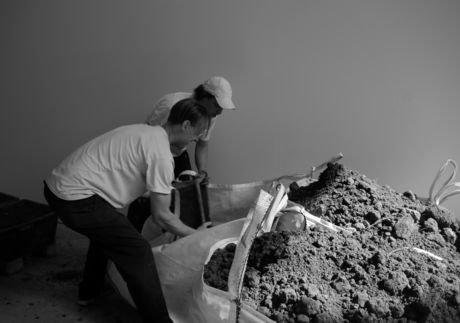40 m3 von der Iberischen Halbinsel
40 m3 of Earth from the Iberian Peninsula
Sep 14–Oct 30, 2013
Santiago Sierra’s first work was a cube measuring one by one by one meter: a sculpture in the style of Minimal Art, but without its clean aesthetic. On the outside, the CUBIC CONTAINER (1990) was made of used truck tarp; worn, patched, weather-beaten and rutted from its travels and the operations of the shipping business from which Sierra sourced the material. At the time he was living near the container port in Hamburg, and to his mind, the logistical formats and processes of global freight traffic fused the capitalist circulation of the commodity with the Minimalist rational aesthetic. Its geometrical basic structures and materials imitated the standards of industrial production while disregarding both their social significance and its own commodity status.
Sierra took on both issues. He saw Minimalism as an “an egregious presumption and self-satisfaction on the part of Western culture”; it pursued the quest for ostensibly objective principles of form as though the latter existed in vacuo—as though systemic patterns in art did not correspond to patterns of thinking, economic life, and finally the reality of people who might be forced to adapt their lives and work to such patterns. Starting in the early 1990s, Sierra’s art accordingly matched Minimalism’s aesthetic to the structural violence that repeatedly prioritizes processes of value creation as well as forms of legal, racial, or ethical normalization over the needs of those who are compelled to submit to or sustain them.
Both the efficient receptacles of commodity circulation (containers, cartons, and other means of transportation) as well as formal standards designed to contain the bodies and dignity of the underprivileged, became Sierra’s most important instruments as he documented how the world is divided into profitable and controllable units, curtailing the self-determination of many people. In a first major retrospective of his oeuvre that opens on September 6, the DEICHTORHALLEN HAMBURG / SAMMLUNG FALCKENBERG recapitulates Sierra’s art with a focus on his approach to sculpture, which examines the rational spatial concepts of modernism and Minimalism with a view to the repression they enact. Sierra’s most recent project for KOW, 40M3 OF EARTH FROM THE IBERIAN PENINSULA, is evidence of the continuity of his sculptural oeuvre.
Sierra had 40 cubic meters of soil excavated on construction sites in Bilbao shipped to Berlin in plastic bags (known as “Big Bags”) measuring one by one by one meter and unloaded at KOW. The provenance of the material from the Spanish real-estate industry points to a shift of power in Europe’s economic structure. Some regions, such as the Iberian peninsula, find themselves devalued to the advantage of other regions or countries, especially Germany. New migration movements are set in motion, a phenomenon that the soil’s journey retraces. The distressed countries of Southern Europe now prepare their assets for shipping; they put their human capital and public property on the market at a discount and hand over control of systemically relevant infrastructures to investors. Packaged in Big Bags, the cheap containers of the shipping business, every cubic meter of Iberian soil represents the sell-out of someone’s living environment and self-determination and indeed of national sovereignty.
But the title Sierra has given to his work mentions a geographic region, not a country. He is interested in the self-determination of human beings, not of states. In his view, the latter are similarly opaque container constructs that exclude what does not fit their norms and normalize what they include. Sierra made that clear in 2010, when he refused to accept the National Award for Plastic Arts, arguing that he did not wish to serve Spanish interests. In 2012, he then staged a cortège through downtown Madrid. Mounted on the roofs of seven limousines were the upside-down portraits of King Juan Carlos I and all prime ministers of Spain since Franco’s death. LOS ENCARGADOS will be on display at the HAMBURGER BAHNHOF in Berlin, starting September 13.
Text: Alexander Koch
Translation: Gerrit Jackson
Photos: Alexander Koch
